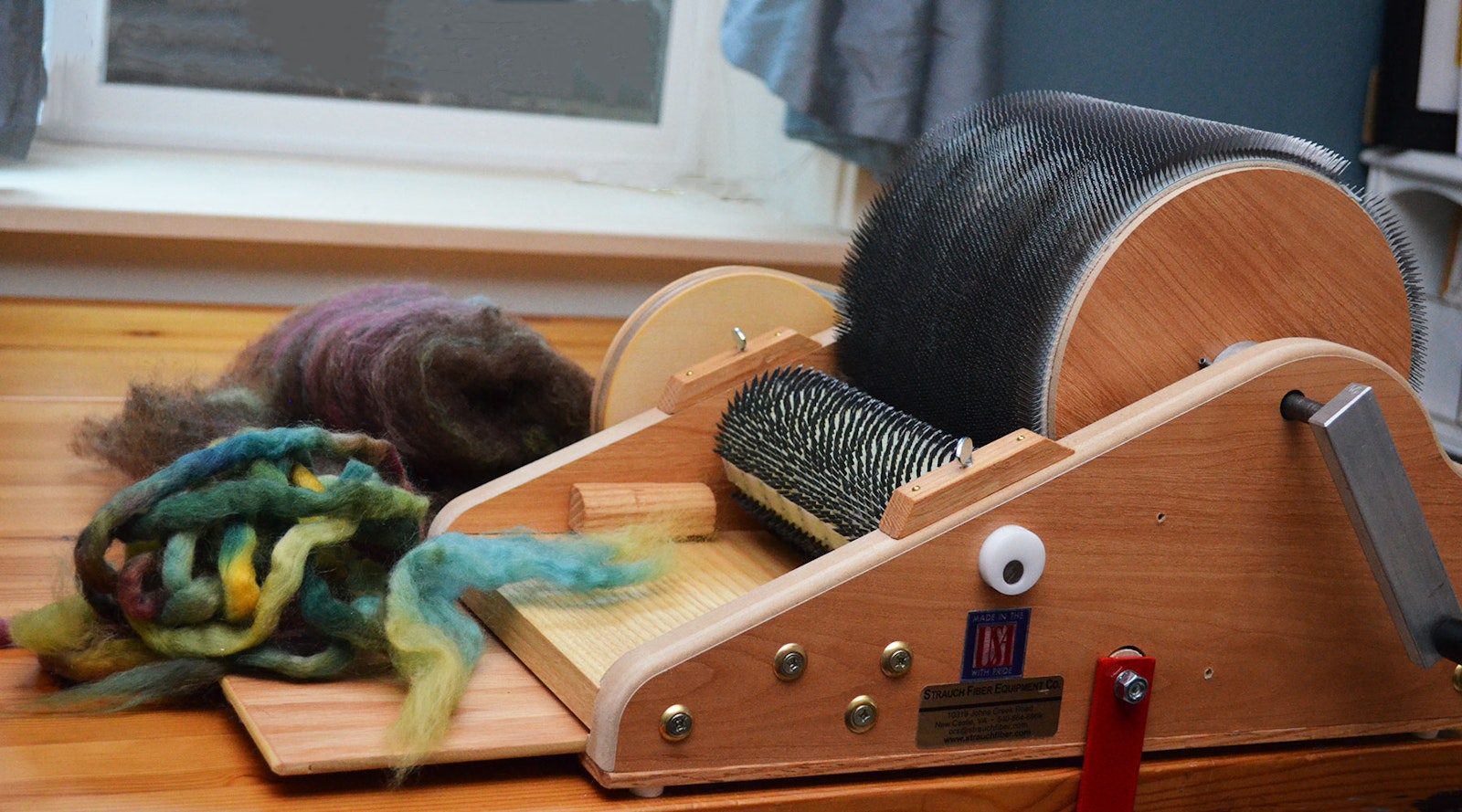I’ve always been happy to buy handmade batts or send fleeces off to be carded at the mill. I didn’t feel the call of the carder until I started working with Emily Wohlscheid, the artist behind Bricolage Studios. Since watching her new video course, Drumcarding Basics and Beyond, I’ve begun looking around my craft room for ingredients and planning recipes in my head.
Emily Wohlscheid, by contrast, loves drumcarding. Some spinners have a small herd of spinning wheels; Emily is like that with drumcarders. She has four, has her eye on two more, and can tell you how best to use them all. I spent a day in her Michigan studio and came away with an appreciation for the tools and the skill for making great batts.
Here are 3 things I realized about using a drumcarder that might also apply in the kitchen.
It can be fancy, but it doesn’t need to be.
Just as you don’t need to make a 7-course meal every time you go in the kitchen, you can use the drumcarder just to blend a few colors of top together or open up some fibers that have gotten a bit compacted. Emily made some batts that included multiple fiber types, placing some elements on the drum and others on the feed-in tray. But others were just layers of wool carded once or twice—simple but delicious.
You can make things just to your taste . . .
Most of the batts Emily is best known for involve highly textured elements; I’m more of a meat-and-potatoes spinner. Looking around at the batts I see people spinning, many of them are custom-made for art yarns—but if I like, I can make a plain-vanilla batt with some bold little chunks to suit myself. As a demonstration, Emily made three different textured batts, from lightly tweedy on a fine-cloth carder to full of chunks on a coarse-cloth carder.
. . . but you might surprise yourself if you try something new.
I sat down with the wild batt, a large whorl, and a core yarn, figuring that I’d spin it up and be done with it. (I’d tried spinning wilder batts before and didn’t love it.) But this time, something clicked, and I found myself enjoying the uneven little fuzz balls. I spun a smooth batt to use as a binder and wound up with some unexpectedly delightful yarn and a willingness to try it again.

Spinning the wildest batt that Emily made in her course, I created a colorful yarn that retained the texture of the original fiber.
Emily has a gorgeous color sense, which makes her work a visual feast. She is the type of teacher who gives you advice and shows you how not to lose a finger, but then encourages you to play and experiment.
Because the biggest revelation about how drumcarding is like cooking is that you’ll get better as you go (and it doesn’t matter if a batch doesn’t turn out the way you like it now and then). Join Emily for the course Drumcarding Basics and Beyond and start making delicious batts.
(This is the part where I’m supposed to say that, having discovered that drumcarding is unexpectedly delightful, I have tackled cooking with new enthusiasm. I have not. I would still rather have someone cook for me—maybe even more so, since I have just added to my list of things I’d rather do with my time.)

